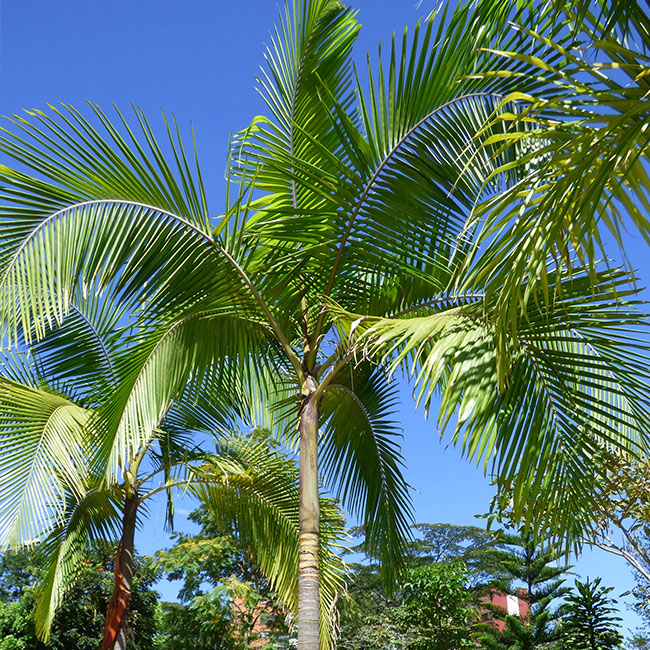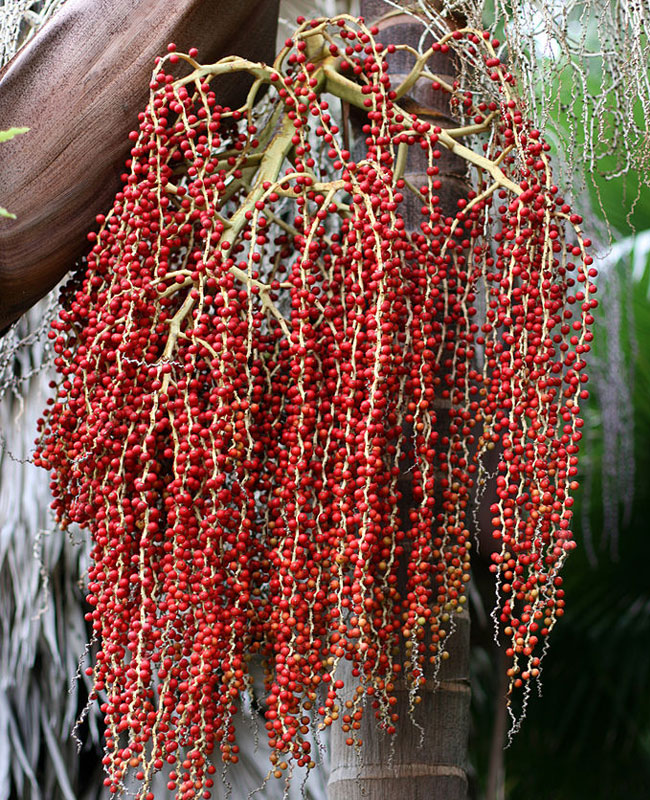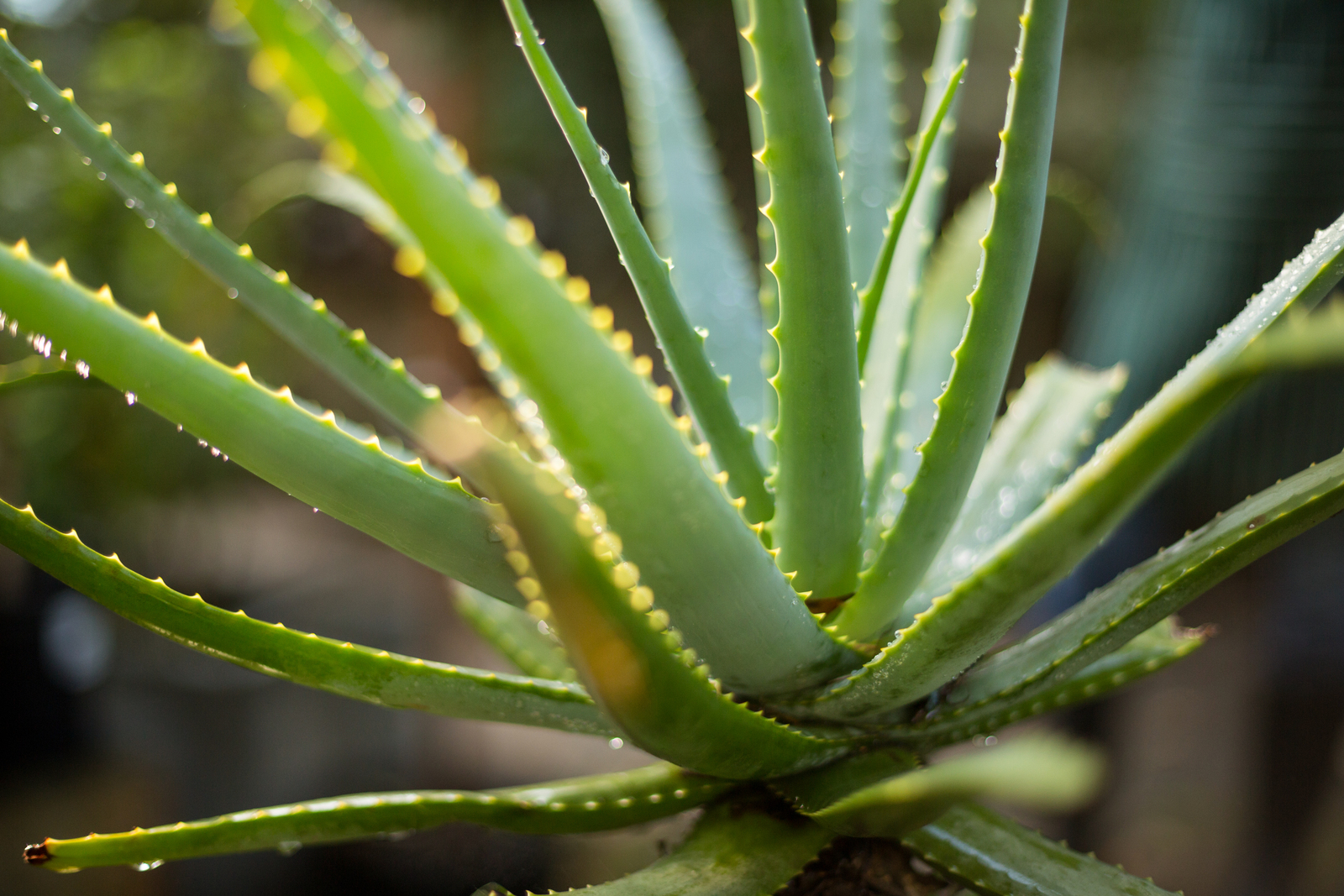Archontophoenix Cunninghamiana – Elegant Fast Growing Palm
The Archontophoenix cunninghamiana palm tree, also known as King Palm Tree, Bangalow Palm, and Piccabeen Palm, is an elegant, fast-growing palm native to Australia.
This palm tree can grow up to 40 feet tall and 15 feet wide. The smooth, light-gray to light-brown trunk is 1 foot in diameter, slightly wider at the base. The crownshaft is 3 feet tall, medium to dark green in color. The crown is formed by fifteen to twenty evergreen fronds that emerge from the crownshaft. The leaflet color is medium to dark green above, and paler green underneath.

King Palm Tree (Archontophoenix cunninghamiana). Credit: Photo by Alejandro Bayer Tamayo, Wiki Commons
The flower clusters circle the trunk just beneath the crown shaft. The small flowers are lavender, rose, or violet in color. Fruit is ½ inch wide (12 mm) and pink or red in color.
Archontophoenix cunninghamiana is slightly hardier to cold climates than Archontophoenix alexander (another type of King Palm); however less tolerant of hot, humid summers.
Partial shade is sufficient in subtropical and tropical climates when this palm is young, full sun exposure when older. Avoid planting in locations with strong, dry winds, cold temperatures, or dry climates.
The Piccabeen palm tree can be grown indoors when it is young with enough space and sufficient light, air circulation, and water. This palm tree grows quickly. It can start as an indoor plant; however, it will eventually need to be transplanted outside. A full-grown king palm tree will reach a height of up to 40 feet.
Growing and caring for a King Palm tree is easy with proper planting, watering and feeding.

King Palm Tree (Archontophoenix cunninghamiana). Photo by Kahuroa, Wiki Commons
Growing Archontophoenix cunninghamiana – Basic Care and Information
King palm trees add elegant tropical appeal to residential and commercial landscape designs. Single specimens are typically used as a focal point in the landscape. Several trees can be planted in a row along a driveway or winding road in large residential and commercial landscapes.
This fast growing palm thrives in full sun to partial shade. It grows best in moist well drained soil.
Tips for Planting Bangalow Palms
USDA Hardiness Zone – Can be planted year-round in zones 10 – 11.
Location – Choose a location that receives partial to full sun. The location should be large enough to accommodate full growth. Choose a spot where the full height of the plant will not interfere with power lines or other overhead obstructions. Allow a minimum of twelve to fifteen feet between plantings.
Soil – Archontophoenix cunninghamiana likes sandy, well-draining soil.
Steps for Planting King Palm Trees
- Place it outside in a shady spot and increase its exposure to sun slowly by an hour a day over several weeks time. Once it is acclimated to full sun plant it in the chosen spot.
- Dig a hole twice as wide as the root ball. Note: The hole should be as deep as the root ball is tall. The soil surrounding the roots should be loose to allow for easy establishment.
- Use a shovel and score the sides of the hole to loosen the dirt. This will help the roots to penetrate through the soil in its new home. Mix the soil from the hole and the pot the tree came in with sand to create a mix of 2 parts soil, 1 part sand. This will allow for proper drainage.
- Add a small amount of water to the bottom of the hole and shovel in a thin layer of the soil mixture. This will help reduce the shock to the palm tree when it is planted.
- Get the roots of the palm wet and place it in the center of the hole – make sure the tree is standing straight. Fill the hole halfway with soil and pack firmly. Fill in the hole with the remaining soil and sand mixture while packing firmly around the base of the palm tree.
- Add three inches of organic mulch around the palm tree. Water the plant thoroughly. Large, newly planted palm trees may need to be protected from winds and storms by using a brace.
- Water thoroughly after planting is completed. Newly planted palms like lots of water. For the first two to three weeks, water daily. Continue watering three times a week. Once established, palms require minimal watering. During the warmer months, water palm tree approximately two to three times per week. Water approximately once a week during the winter.
Approximately six weeks after planting, fertilize Washington Palms with a high-quality palm tree fertilizer. Fertilization schedule will be three times a year thereafter.
Note: Choose the location wisely; transplanting palm trees once they are established is risky.
Palm Tree Care
Water
Requires consistently moist soil; do not let dry palm out between watering.
Fertilizer
Fertilize Archontophoenix cunninghamiana in the spring and midsummer. A single application of a high-quality, continual-release formula will feed your palm for a few months at a time. Apply fertilizer to the soil in a large ring at least 2 foot from the trunk.
Do not fertilize newly planted palm trees until new growth appears – approximately six to eight weeks after planting.
Propagation
Propagate Archontophoenix cunninghamiana by seeds. The best time to sow seeds is in the spring. Self-sows freely; deadhead if you do not want volunteer seedlings next season. Seed germination is quick and easy. Germination occurs in 6 weeks to 3 months.
Pests and Diseases
The main pest problem for Bangalow Palms is spider mites. Young palms can suffer from leaf spot. If the soil is not well drained, root rot can occur.
- Home
- Palm Tree Species
- Archontophoenix Cunninghamiana



